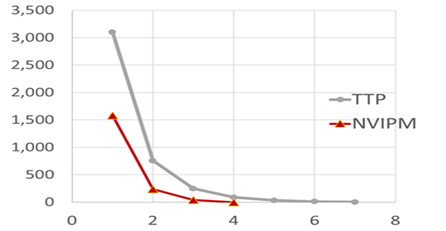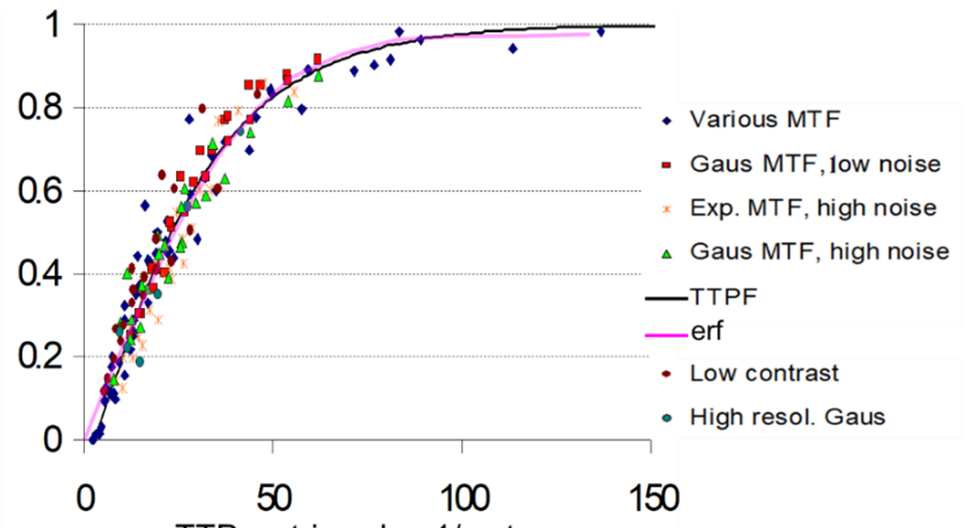The Original TTP Model Was Validated. NVIPM Was Not.
No explanation. No validation. No integrity.
This site sets the record straight on what happened to the Army’s original TTP model
— and why the NVIPM cannot claim its legacy.
What Was the TTP Model?
A rigorously tested, Army-accepted model — not “mine,” but official.
Developed under formal Army guidance and accepted by the Under Secretary of the Army for Operations Research, the original Targeting Task Performance (TTP) model was:
.Built on solid optical science and vision modeling
.Validated through 76 experiments
.Used to predict real-world sensor performance
.Applied across frequency-domain analysis (IQM)
✅ It worked. It was tested. It was accepted.
Irrelevant NVIPM Testing
The Army uses NVIPM despite failed validations. It replaced the original model without proof, testing, or documented scientific justification.
No Proofs or Records
No validation data for NVIPM exists. The Army published no supporting evidence, only unverified claims with no comparisons to validated results.
Model Comparison
NVIPM is not TTP. Using the same name doesn’t transfer validation. Structural changes make it a different, unvalidated model entirely.
Our Mission
To preserve the scientific accuracy and integrity of the original Targeting Task Performance (TTP) model — the only formally validated imaging performance metric accepted by the U.S. Army — and to expose the undocumented, unvalidated changes introduced by the NVIPM model. This platform exists to provide engineers, analysts, and decision-makers with clear data, verified results, and honest comparisons, ensuring that defense modeling remains rooted in evidence, not assumption.

What Did They Do Next?
They changed it — without validation. Then claimed it was the same.
After I left, my successor quietly altered the model:
.Changed critical inputs (target geometry, display handling, etc.)
.Reframed the model under the name NVIPM
.Never validated it
.Never explained the changes
Then they told people NVIPM is TTP — and worse, claimed my validation data proves their version works.
This is not just misleading.
It’s scientifically reckless.

Figures

Metric Values vs. Range
Figure 3

PID Task Illustration
Figure 6

PID for Tracked Vehicle Target Set
Figure 24
The False Logic
“The lack of recognition of the validation of the original TTP IQM can be laid to simple ignorance or lack of interest.”
— R.H. Vollmerhausen
What we’re seeing is circular nonsense:
.TTP was validated
.NVIPM is different
.NVIPM fails
.So they say “TTP” fails
.But they’re not testing TTP — they’re testing NVIPM
Think about that.
They broke the model, renamed it, and now blame the original for their version’s failure.

Why This Site Exists
This platform serves as a technical archive and factual correction, built to address widespread confusion about the U.S. Army’s misuse of the TTP name and the unvalidated NVIPM model that has replaced it.
Though often misattributed, the original Targeting Task Performance (TTP) model was developed and formally validated under Army authority — not altered, renamed, and untested as NVIPM has been.
Led by Dr. R.H. Vollmerhausen of RHV Electro-Optics, LLC, this site is committed to:
.Presenting peer-reviewed, experiment-based validation of the original TTP model
.Correcting unsupported claims found in military and academic publications
.Providing data, tools, and charts for engineers, modelers, and program evaluators
.Promoting scientific transparency in defense modeling and acquisition
This isn’t an opinion. It’s documentation.
This platform is not just a rebuttal — it’s a call for technical accountability and a trusted reference for the electro-optical systems community.